BATS
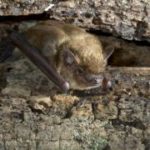
Bats are nocturnal mammals that feed mostly on insects. There are several bat species native to Arkansas, the most common being the Red Bat and they’re usually the first bat to emerge from darkness in the evening.
Bats can enter dwellings through very small openings (approximately ½ inch) and are commonly found in attics. Bat entry is made through holes in rooflines, chimneys, gables or vents.
Once inside their droppings (guano) accumulate which can be extremely odorous and serve as a breeding ground for disease. In addition, bats are known carriers of rabies and other insects such as ticks and fleas.
Since they feed at night, Curry’s trained and licensed bat pest control professionals will identify and seal off entry points after dusk to prevent bats from reentering your home. Any remaining bats will be safety captured and released to find a new home in a natural sheltered area.
If you have bats, then don’t try to handle them yourself. Call Curry’s today.
BIRDS
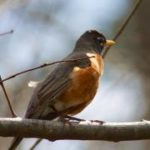
Birds are a part of our daily lives and we seem the often not as a “pests” but rather strictly as an outdoor animal that avoids human areas as much as possible. This is not always the case and bird problem can lead to decreased business, contaminated products and expensive damage to building exteriors.
Certain species of birds have become recognized public health threats because they harbor disease organisms that can be transmitted to humans. Bird droppings are an added problem, signaling unsanitary conditions and deteriorated building finishes. Bird droppings can also be expensive to clean up if left unattended.
Curry’s can customize a bird control program that utilizes exclusion and habitat modification to make your facility unattractive to birds. We also handle bird capture and release for the errant bird that accidentally made it’s way into your home and can’t find his way out. Call Curry’s and your bird problems will fly away.
MICE
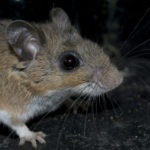
Mice are one of the most troublesome and economically harmful rodents found in Arkansas. Mice frequently find their way into homes in the autumn when outdoor temperatures at night become colder. Mice can squeeze through openings as small as a 1/4 inch across. Mice have poor eyesight but a highly developed sense of smell. Unsecured floor stores and pet food is an often cause of mouse inhabitance.
Most house mice are brown in color and feature long, hairless tails and are also extremely intelligent. It’s often difficult to outsmart a resourceful and hungry mouse who’s made itself comfortable. When you see one, it usually means that there are many more you don’t see.
Curry’s pest extermination services provide effective mouse control by helping to identify and eliminate food sources, properly seal points of entry, and exterminate any current infestation if necessary.
OPOSSUMS (POSSUMS)
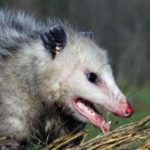
Opossums (Possums) are North America’s only marsupial. This means, like kangaroos, females have a pouch on their belly where they carry and feed their young.
Mature possums are approximately the size of a house cat at two feet long. They have white to grey fur, hairless tales and weigh in at about ten pounds. They are mostly nocturnal mammals, omnivorous, excellent climbers and are known to act dead or “play possum” as a defensive measure.
Opossums are a nuisance and threat to homeowners if they take residence in attics or crawl spaces because their large droppings carry various parasites and diseases. They are also known to steal garbage, pet food and harass pets.
Curry’s opossum control professionals have the experience and knowledge in all types of wildlife control to keep your home and family protected from these and other nuisance pests. Call Curry’s opossum removal experts today for your free home evaluation.
RACCOONS
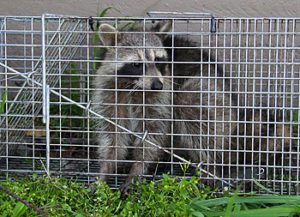
Raccoons are predominantly nocturnal mammals that feed on berries, insects, fruit and small mammals. Although they live mostly in wooded areas, they adapt extremely well to urban and suburban environments where they often nest beneath decks or in attics or crawl spaces to which they have gained access and where they will raise their young.
Raccoons are known carriers of rabies and their droppings may lead to fleas and other parasites. They are extremely adept with their hands using them to open garbage cans, remove siding and even tear off shingles to gain access to a suitable place to call home.
Raccoon pose a real threat to your health and property, so raccoon control services can be crucial in protecting your home and family from these nuisance pests. Curry’s raccoon control specialists will trap and remove these critters via live trapping methods.
To keep raccoons from reentering your home, our raccoon removal experts will also perform exclusions methods which entail using metal flashing, metal mesh to cover any and all possible entry routes or in some cases re-construction of the entry area. Raccoons are very resourceful and the experts at Curry’s Pest control have the experience to safely remove them and keep them out.
RATS
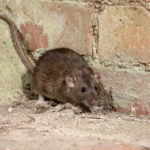
Rats, and more distinctly Norway Rats, are very common in Arkansas. Inhabiting a very large region of North America, these scavengers live in very close association with people. In urban or suburban areas they live in and around residences, in cellars, warehouses, stores, slaughterhouses, docks and in sewers.
They may burrow to make nests under buildings and other structures, beneath concrete slabs, in garbage dumps and at other locations where suitable food, water and shelter are present. This makes them a very persistant threat.
Adult Norway rats weigh an average of 1 pound. Their fur is coarse and usually brownish or reddish-gray above and whitish gray on the belly.
Rats use their keen sense of smell to locate food items and to recognize other rats. Rats cause structural damage to buildings by burrowing and gnawing and can undermine building foundations and slabs. Rats also may gnaw on electrical wires or water pipes and further damage structures further by gnawing openings through doors, window sills, walls, ceilings, and floors. Considerable damage to insulated structures can occur as a result of rat burrowing and nesting in walls and attics.
Rats have been known to transmit murine typhus, leptospirosis, trichinosis, salmonellosis (food poisoning), and ratbite fever to humans and other animals. Telltale signs of rat activity are droppings found along runways or in feeding areas, smudge marks (rub marks) on walls, floors or baseboards as a result of oil and dirt rubbing off rats’ fur along frequently traveled routes, and gnawing marks visible on doors, ledges, in corners, in wall material, on stored materials, or other surfaces.
If you see signs of rat activity, give Curry’s a call today and we’ll enact a rat pest control plan immediately.
SKUNKS
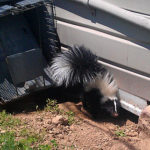
Skunks have a noteworthy reputation due to their documented defense mechanism: a very pungent odor that repels predators and can temporarily blind. Luckily they’re easy to spot due to the their black coat and white stripes running along the center of the back and tail. Before firing from its scent glands located the base of the tail, a skunk will often warn with a “war dance” and will raise it’s tail.
While helping control unwanted pest populations, skunks are known to do harm to property like digging under foundations to take refuge beneath homes or low decks.
Skunks carry serious health concerns, second only to the raccoon in number of recorded rabies cases within the United States. The best way to control or prevent skunks from taking hold in an area is exclusion.
If skunks have already taken residence, then a call to Curry’s will let us determine where their den is and how many you’re dealing with. Curry’s will ensure that all skunks are out of the den area before excluding re-entry points.
SNAKES
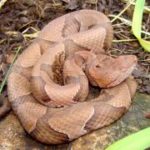
Snakes are usually classified as a pest species due to a wide spread fear of the animal. Although they are an important part of our ecosystem and control the population of other pest animals such as mice and rats, many people wish to have this nuisance reptile removed from their property.
Because of our climate, Arkansas is home to 36 species of snakes, only 6 of which are venomous (Copperhead, Cottonmouth, Coral, and three species of Rattlesnake). Unless you are a snake expert, you could easily mistake a harmless snake for a venomous one. And even the harmless snakes should be left alone in the wild.
Leave the removal of snake to the experts at Curry’s. Snakes need very little space to enter a home area in search of prey and are common to areas like decks, screened porches, foundation areas, garages, storage building and even inside of homes when it gets cold outside.
Because they’re difficult to trap, a trained professional like Curry’s uses a pole tong and other safety equipment to safely remove snakes. Snakes are territorial when they feel threatened and are unpredictable to those who are not trained in handling them.
Do not attempt to handle a snake yourself. Please call Curry’s if you encounter a snake in or around your home.
SQUIRRELS
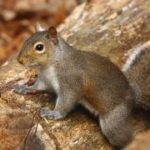
Squirrels may be cute but they can be a real problem if they get too friendly. If you hear noises in the attic, chances are you may have a squirrel problem. As temperatures start to drop in the fall, squirrels enter homes looking for warm surroundings and a place to nest for the winter. Squirrel problems can be considerable for homeowners.
Not only can squirrels make holes in the exterior trim or siding of your property from which they will gain entry, once inside they can continue their destruction by gnawing on electrical wiring that could potentially cause a short and even a fire. Additionally, squirrels can be carriers of fleas and other unwanted organisms.
Curry’s trained and licensed squirrel control specialists will locate and seal off all open entry points that will prevent squirrels from entering your home in the future. In addition, our wildlife control services include live trapping and removal. For more information on Curry’s squirrel exterminator services, just contact us today and we’ll get started on getting that pesky squirrel back where he belongs.
For a complete list of common termites, pest and animals visit our Critter Catalog.
